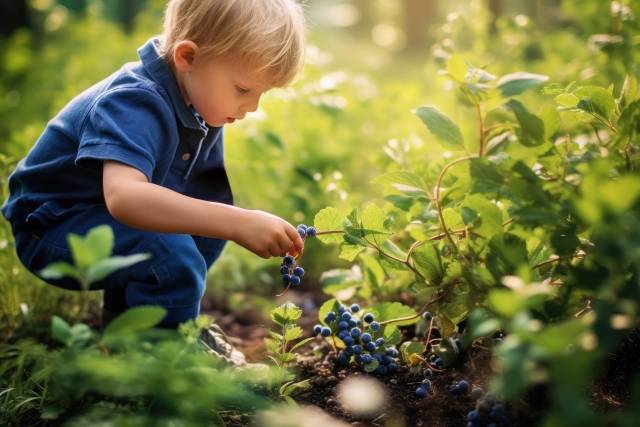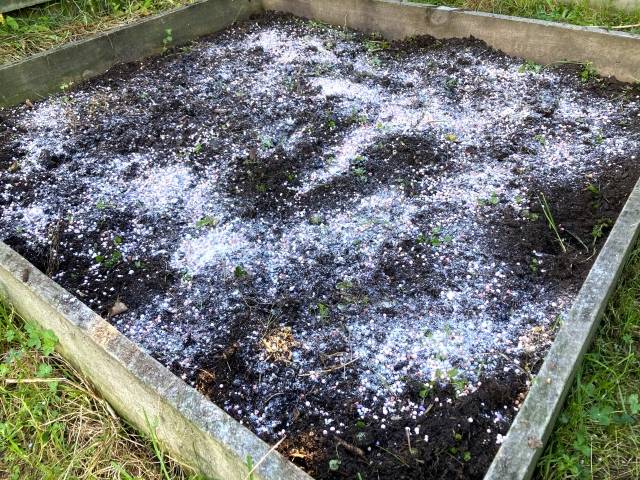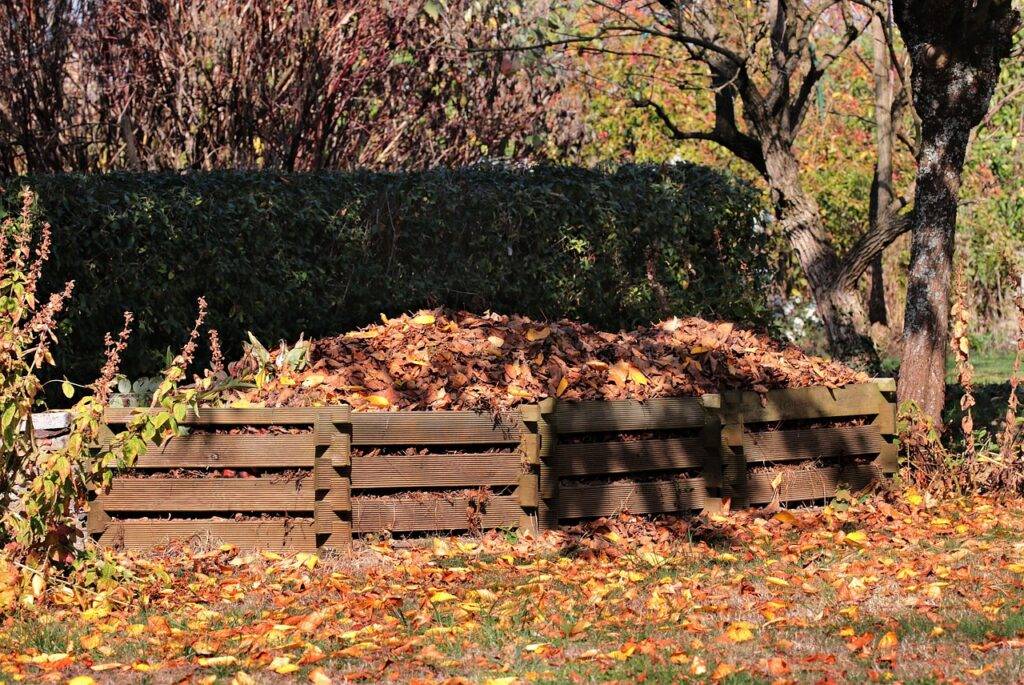Ever considered gardening, only to be intimidated by intricate techniques and confusing botanical terms? Or maybe you’ve tried your hand at it but struggled to grow thriving plants? This article is designed just for you. Embark on a fascinating journey that intertwines gardening with the natural world, delving into an approach called Comprehensive Agro-Ecosystem Management (CAM) in Nature Farming. We’ll reveal the allure of CAM, sprinkle in some expert insights, and keep you engaged with captivating stories and practical applications.
CAM is a holistic strategy that emphasizes nurturing the soil and its internal ecosystem. In the realm of Nature Farming, enriching the soil is the key to successfully growing crops without resorting to synthesized chemicals like fertilizers.
Misconceptions: Fertilizer’s Role in Gardening
When people decide to grow vegetables in their backyard, they often jump to the conclusion: “I need fertilizer. The plants won’t grow without it…” If the plants falter, they think, “They need more fertilizer.”
This is a misconception. Fertilizer doesn’t make plants grow – the soil does. The soil isn’t just a mix of rock, sand, or clay. It isn’t lifeless. It’s teeming with microbes and tiny creatures. The soil is alive.
The Power of Balance: CAM’s Approach to Nurturing Soil
If the ecosystem balance is maintained in the soil and its surroundings, there’s no need for chemical fertilizers. Furthermore, well-balanced soil can fully exercise its power to yield an abundant harvest. That’s why soil management is essential. If properly maintained, soil has the potential to control pests and diseases entirely. Enhancing soil quality is the cornerstone of organic vegetable growing and forms the basis of the entire ecosystem.
Understanding CAM: Observing Nature to Learn
As you embark on organic farming/gardening, you might consider compost as a fertilizer substitute, leading you to add more of it to the soil in hopes of larger yields. However, the role of compost differs. One of the missions is to aerate the soil to enhance root development. Compost plays a supporting role – the soil is the star. If compost overshadows the soil, farming success is unlikely.
Knowing the roles of each method, such as compost or green manure, is important. These techniques can boost soil vitality. CAM is, once more, a holistic approach to sustaining the farm’s surrounding environment.
Compost Is Not Fertilizer! Understanding Its 3 Purposes
CAM differs from Integrated Pest Management (IPM), which mainly concentrates on handling plants, pests, and diseases. Essentially, IPM is a component of CAM, making CAM a broader and more inclusive model.
Observation and Five Senses
For CAM to succeed, observation is crucial. I emphasize this because nature can guide you. In the world of gardening, soil preparation is akin to understanding nature, a silent teacher that communicates through signs. Patience and observation are vital to this learning process, much like raising a child. You may stumble initially, but over time, you’ll decode the signals that plants provide, akin to understanding a baby’s needs. So, devote at least three years to observing nature, and you’ll begin to grasp its essence.
Your five senses play a crucial role in the practice of CAM. The more you observe and practice, the sharper your senses get, improving your bond with nature. As a result, your observations improve, leading to better findings and making you a better nature gardener.
It’s said that “Modern ways of life interfere with our senses – mainly sight, sound, and smell.” But keeping your five senses in good shape is important for your health. Gardening can be a great way to fine-tune your senses.
Modern ways of life interfere with our senses
Understanding the Equation: Nature’s Laws and Local Conditions in CAM
This equation forms the backbone of CAM and encapsulates the essence of Nature Farming. The unique method operates on a straightforward principle:
<Nature’s Laws X Conditions = Results>.
While the laws of nature remain constant, results can vary based on local conditions. Understanding both aspects is crucial to optimizing your outcomes. Once again, observation is key as the laws are unalterable. To grasp this formula, let’s dissect it.
7 Principles of the Laws of Nature
Principle 1: Understanding the Vital Role of Soil
Okada offers deep insights about the laws of nature that guide CAM.
“Soil is alive. It’s designed to produce enough food to feed humans. Keeping soil clean and pure is of utmost importance.”
Okada Mokichi
To unlock the full power of soil, we need to keep it clean and pure. This means avoiding the use of unprocessed manure and synthetic chemicals, which can harm both the environment and our health. In doing so, we can achieve a healthy soil condition where nutrients are well-balanced – neither deficient nor excessive. Achieving this balance stimulates the soil’s microorganisms, fostering a thriving soil ecosystem.
The ideal soil state is one that promotes fermentation and generates life, not one that causes decay or is simply sterile. It should have a well-aggregated structure, be rich in life, and have a finely tuned nutrient supply to meet your plants’ needs. It’s important to note that technically, there’s a difference between fermentation and putrefaction. Fermentation turns things useful (like turning grapes into wine), while putrefaction turns them into waste. This process also applies to soil. If the soil is fermented by microbes, it reaches its full potential. But if it decays, it leads to more diseases and attracts harmful bugs.
The conditions of your garden play a crucial role in the success of CAM. Remember, in CAM, every organism plays a key role, maintaining a delicate balance.
Principle 2: The Balance of Sun, Water, and Soil
CAM emphasizes the importance of the Sun, Water, and Soil, as they are the main energy sources for plant growth, not the chemical fertilizers we often rely on. Overuse of artificial fertilizers can disrupt this natural energy balance.
The aim in CAM is to make the most of these three natural elements to create a thriving garden. This means arranging your garden so your plants receive the right amount of sun, water, and soil nutrients, based on their needs. If you watch nature closely, you’ll notice this energy balance shifts with the seasons. This calls for adjustments in your gardening practices to align with these changes, fostering a deeper connection with nature.
Best Organic Fertilizer: What Really Grows Crops? The Concept of Fire, Water & Soil
Intuitive Farming?!
This principle also encourages intuitive gardening.
Many people want to start a home garden. Some might think, “If you grow organically at home, there’s nothing much to do. Just plant and let nature take over. No need to study.” But this approach often fails. They should learn more. However, if you’re reading this blog, you’re likely eager to learn. In conventional farming, strong, potentially harmful chemicals are often used, so scientific knowledge is crucial. But with organic gardening, intuition plays a larger role. Once you’ve learned the basics, relying on your intuition can be beneficial, as methods vary based on conditions.
For instance, “It’s sunny and hot today, I should water more.” Or, “It’s been raining, I won’t need to water for a while.” These are things you can intuitively understand. However, in today’s world, people often work all day in an office, detached from nature’s rhythms. They may not even realize whether it’s sunny or raining outside. This disconnect from nature can lead to an absence of basic intuition about the natural world.
Some new gardeners might admit to not knowing what they were doing at first. However, with time and practice, this intuitive understanding returns. This rediscovery can be a rewarding aspect of gardening that many of us, immersed in modern life, have lost.
Gardening can help revive your intuition. This intuition is necessary for successful urban nature farming, and it can be honed through gardening and reconnecting with nature.
As a beginner, you can depend on available information and slowly fine-tune your senses through experience. Eventually, you’ll grasp the core principles.
In this respect, urban nature farming could be called Intuitive Farming.
“Can Plants Predict Weather Patterns?!”: A Riveting Tale from Japan’s 1976 Cold Snap
Principle 3: Timing & Order
Just like summer follows spring, order and timing are essential in CAM, aligning with nature’s rhythm. Soil preparation should precede seeding or planting, and remember, it takes time—preferably about six months at least (depending on the condition of the soil). Decide when to sow your seeds, then work backwards to schedule soil preparation. If you plan to grow tomato seedlings in spring, start preparing your soil in the fall. One common mistake is starting soil preparation around the same time as seeding. Although chemical farming doesn’t require much time for soil preparation, Nature Farming does.
Also, keep in mind seasonal cropping, which we’ll discuss later.
Principle 4: Tillage
Once a balanced ecosystem is established in the soil, don’t disrupt it. Regarding plowing, CAM advocates for minimal tillage, meaning avoid disturbing the soil once a natural cycle is in place. However, if necessary, human intervention can assist in bringing the cycle closer to its natural state. More on this when we discuss conditions later.
Principle 5: Symbiosis & Diversity
CAM’s View on Weeds, Fertilizers, and Insects
CAM shuns a one-size-fits-all mindset. Instead of applying a single solution for pest management, CAM employs various techniques like companion plants and green manure to enhance the garden’s overall environment. Symbiosis and diversity are key principles in CAM.
Principle 6: Harnessing the Power of Beneficial Microbes
Microorganisms have a massive influence on the soil. Encouraging beneficial microbes can steer outcomes in a positive direction.
An important aspect of CAM is activating beneficial microbes in the environment. Especially, soil amendments like Effective Microorganisms (EM) are useful. The idea is simple: if ‘good’ microorganisms make up 80% or more of the soil’s microbe population, they can suppress the ‘bad’ ones. Problems like pest infestations and diseases are influenced by these harmful microbes.
Beneficial microbes promote fermentation, while harmful ones encourage decay, and vice versa. By fostering ‘good’ microbes, you can establish a fertile, generative and productive soil state.
Principle 7: Planting the Seeds of Success
Selecting the right seeds is crucial in CAM. Okada recommends using seeds free of chemical contamination. Source your seeds from experienced nature farmers for the best results. You can also try self-seeding. More on this when we discuss conditions later.
Grasping the Condition: Adaptation to Seasonal Cropping
<Nature’s Laws X Condition = Results>.
We’ve explored Nature’s Laws, so let’s now focus on the Condition aspect. These two elements collectively shape your Results.
In CAM, it’s crucial to realize that optimal farming techniques hinge on your specific natural environment. Not all methods work uniformly everywhere. Your gardening practices must be in tune with your local climate, surroundings, and land conditions. This approach sets CAM apart from conventional chemical farming and brings us closer to sustainable, healthful, and fulfilling gardening experiences.
Okada emphasized that everything—from land conditions, local climate, environment, location, sunlight, irrigation, to seeding and planting timing—should be adapted to local circumstances.
Adapting Gardening Practices to Local Conditions
Instead of seeking the ultimate farming method, consider the nature of your local environment first, and then, determine what practices suit it best. Farming methods can fluctuate based on the environment.
For instance, land conditions heavily influence tillage. As discussed earlier, tillage depends on soil health. The general rule is not to disturb by plowing. However, it depends. If the soil is fertile with active microorganisms, there’s no need to till, as it could harm soil biota. On the contrary, in infertile soil, it’s better to dig deeper initially.
Climate is another crucial factor. Simply put, bananas flourish in tropical climates, not in cold regions. Forcing banana cultivation in cold climates using natural farming methods isn’t practical. Choosing the right crops for the right weather is essential in Nature Farming. Certain vegetables prefer shade, others thrive in sunshine. Some favor moist conditions, while others are suited to dry weather. Climate greatly impacts agriculture.
With this in mind, when choosing what to grow, especially when moving to a new place or starting gardening afresh, it’s helpful to ask long-term local gardeners about the best crops for the area. Here are some examples of fruits and vegetables and their peak seasons:
- Winter Season: Chestnuts, Tangerines, Kale, Leeks, Radishes, Turnips
- Spring Season: Apricots, Avocado, Rhubarb, Strawberries, Asparagus, Mustard Greens
- Summer Season: Blackberries, Peaches, Tomatoes, Broccoli, Cucumber, Green Beans, Zucchini
- Fall Season: Apples, Grapes, Butternut Squash, Cauliflower, Potatoes, Pumpkin, Swiss Chard
Seeding and Growing: A Condition-Dependent Approach
Seeds are also quite sensitive to local conditions. This sensitivity is one reason why Self-Seeding is recommended. Ideally, seeds can be transferred and planted within 90km (56miles) of their native land. Beyond this distance, the first generation may struggle due to unfamiliar conditions, so you might not see great results. The second generation, however, will likely adapt better to the new environment.
Remove Stress for Young Plants
Also, cultivating a conducive environment for healthy crop growth is not just about weather. For instance, relieving stress for young plants is crucial. Their tolerance is relatively low, so daily observation is key. Water only when necessary, as excessive moisture can stress certain plants. If you’re using a greenhouse, regular temperature adjustment is important.
CAM is about Soil Quality Building
CAM is ultimately about soil quality building and preparation. The foundation of this is respecting and adapting to nature. Respecting nature means understanding the laws of the universe, and adapting means adjusting practices according to the specific conditions of each garden/farm.
So, let’s garden in harmony with nature, not against it! Step into your garden, embrace nature’s rhythm, and discover the joy of gardening through CAM. Happy gardening!





